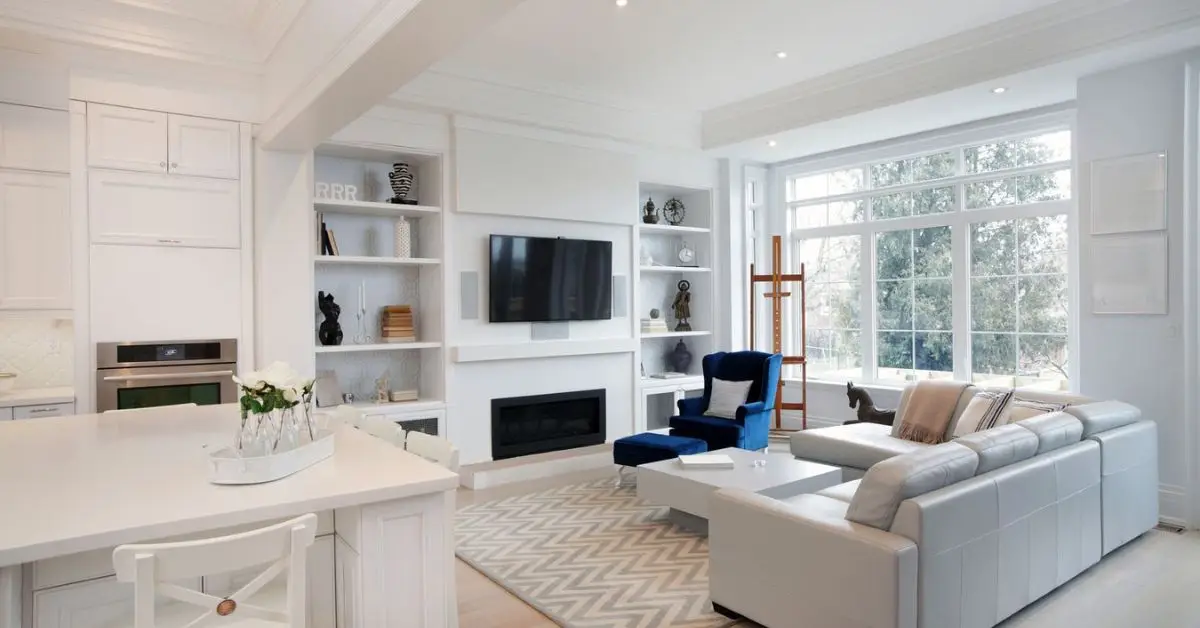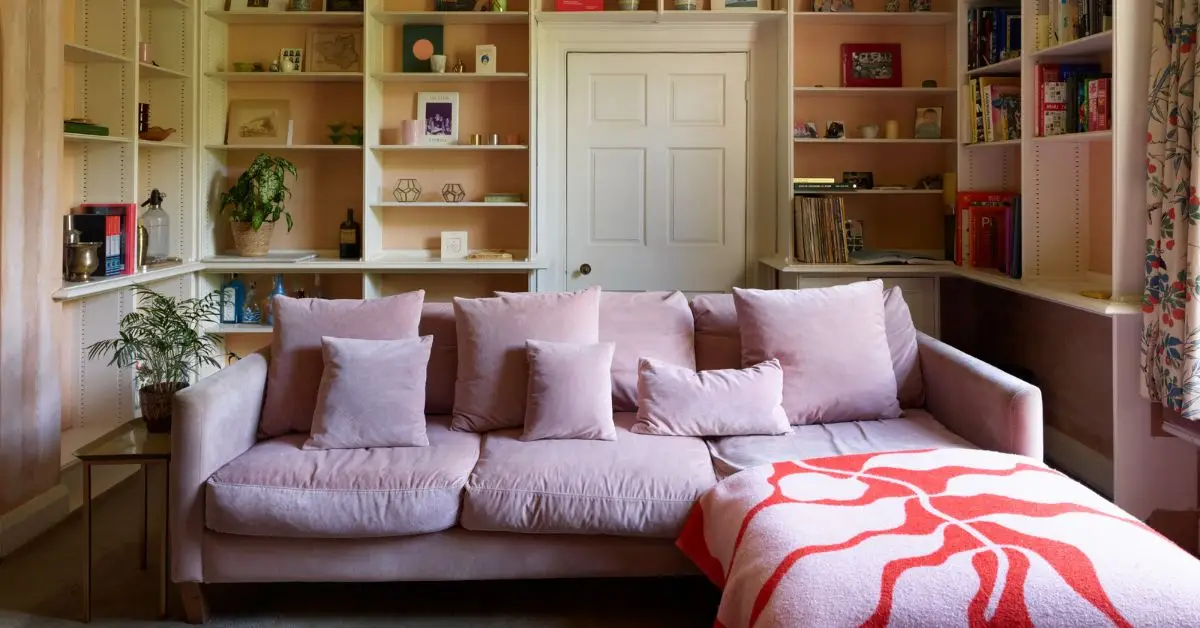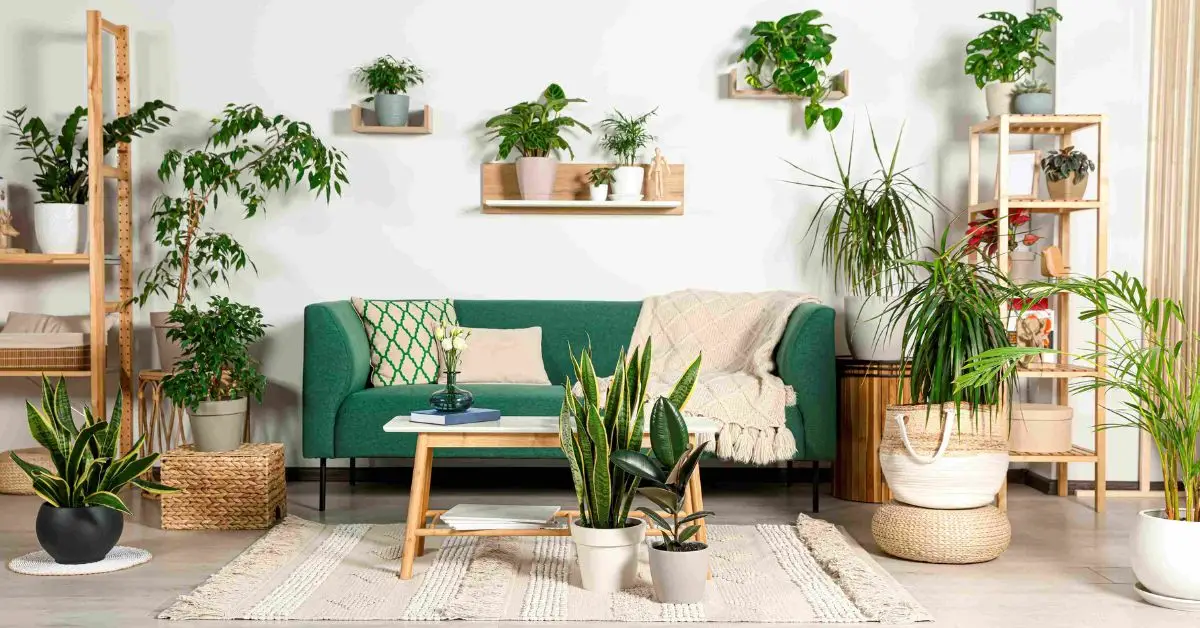14 Effortless Living Room Makeover Steps Every Homeowner Can Do This Weekend
If you’re busy and your living room stresses you out, you’re in the right place. I’ve spent years fixing rooms that looked “fine” but never felt finished, and I know you don’t have endless weekends or a designer’s budget.
Here’s my promise: I’ll show you exactly how to decorate a living room step by step in 14 clear moves you can tackle in short bursts. No jargon. No shopping sprees you regret. Just a path that cuts the noise and gets you a calm, good-looking space that actually works for your life.
We’ll start with a fast audit so you stop second-guessing and avoid returns. Then we’ll lock your layout, color story, lighting, and storage—the four decisions that do 80% of the work. After that, we’ll layer personality without clutter so your room feels lived-in, not messy.
I’ll call out common mistakes (like buying a sofa before measuring or choosing a tiny rug) and give you “busy-day” options—30-minute tasks you can finish between everything else. You’ll know what to do first, what can wait, and what to skip entirely.
By the end, you’ll have a room that feels intentional, easy to maintain, and welcoming on a Tuesday night or when friends drop by. Ready to dive in? Tell me one thing that bugs you most about your living room right now.
Laying the Groundwork
1. Quick Room Audit — What’s Working, What’s Not
Before you touch a single piece of furniture, do a no-pressure, 15-minute walk-through of your living room. The goal isn’t to “fix” anything right now—it’s to see the room for what it is.
How to do it:
- Stand in the doorway and take in the whole room as if you’re a guest walking in for the first time.
- Make two quick lists:
- Keep: items you genuinely use and love (your go-to armchair, the bookshelf that fits perfectly).
- Replace/Remove: items that annoy you, feel too big, or serve no purpose.
- Take phone photos from multiple angles—sometimes clutter or awkward arrangements are easier to spot on screen.
Why it matters:
- You avoid buying decor that “looks good” online but clashes with what’s already working.
- You spot easy wins—like moving a lamp or swapping two chairs—before spending a rupee.
Social tip from Reddit: One popular comment says, “Audit before Pinterest!” This mindset stops impulse buys and keeps you focused on fixing real problems, not chasing trends.
2. Accurate Measurements = Zero Guesswork

Buying the wrong-size sofa or rug isn’t just frustrating—it’s expensive and time-consuming to fix. A measurement checklist is your safety net.
What to measure:
- Room dimensions: length, width, ceiling height.
- Windows & doors: width, height, and swing direction (doors that open into the room can block furniture).
- Existing furniture footprints: length, depth, and height of big pieces you plan to keep.
- Pathways: leave at least 2.5–3 feet for comfortable walking space.
Designers always double-check measurements, even for “safe” purchases like end tables, because poor scale throws off the whole layout.
3. Define Room Purpose & Priority Zones
A living room that tries to be everything often ends up being nothing special. Get clear on the main role your space needs to play.
Questions to ask yourself:
- Is it primarily for relaxing after work, hosting friends, or family activities?
- Do you need a spot for kids to play without taking over the whole room?
- Will you work from this space, even occasionally?
How to create zones:
- Use rugs to visually divide areas (one for the seating area, one for the play zone).
- Position lighting based on activity (a bright floor lamp for the work corner, softer lighting for the TV area).
- Keep storage close to each zone’s use (toy bins near the play mat, media cabinet near the TV).
Why this works:
- Purpose-driven design keeps you from overfilling the space with “just in case” items.
- It helps every inch of the room work harder for your lifestyle, not just for show.
Setting the Style & Mood
4. Pick a Signature Style That Feels ‘You’
Forget copy-pasting a Pinterest board you barely relate to. Your living room should reflect your lifestyle, not just a trend.
How to choose your style:
- Look at the clothes, cafes, or hotels you’re drawn to—your taste often shows up there.
- Mix two complementary styles if needed (modern + cozy, minimalist + rustic) so it feels lived-in, not showroom-perfect.
- Consider maintenance—glass tables look great but show fingerprints daily; plush rugs are soft but need vacuuming often.
Why this matters:
- When style fits your life, you won’t constantly “fix” or replace decor.
- It creates a natural filter for what you buy and what you skip.
If you want to go deeper into setting the right home vibes that align with your personality and lifestyle, check out our detailed guide before finalizing your style mix.
5. Choose a Color Story That Works All Year

Your color palette should stay fresh from January to December—no complete overhauls every season.
How to lock it in:
- Pick one base neutral (off-white, light beige, warm gray).
- Add one or two accent colors that can shift with seasons (rust + mustard for fall, blush + teal for spring).
- Use decor pieces—pillows, throws, vases—to bring in seasonal shades without repainting walls.
Colour psychology research from the University of British Columbia shows that neutral bases with warm accents keep spaces feeling inviting year-round, boosting both comfort and visual harmony.
Maximizing Space & Layout
6. Arrange Furniture for Smooth Traffic Flow
Crowded walkways make a room feel smaller and harder to enjoy. Follow the “don’t block pathways” rule, especially in narrow or multi-use spaces.
Steps to achieve good flow:
- Leave at least 2.5–3 feet of space between major furniture pieces for easy movement.
- Float sofas or chairs slightly off walls to create breathing room.
- Group furniture by function—seating for conversation, side table for coffee, console for storage.
Arranging furniture with clear pathways makes the room feel bigger and more inviting, even if the square footage is small. For layout inspiration that blends functionality with style, explore these modern living room renovation ideas packed with examples and pro tips.
7. Create Mini Zones with Rugs & Lighting
For busy families, zoning turns one big room into multiple functional spaces—without adding walls.
Ideas to try:
- Kids’ corner: small play mat, toy bin, floor cushion.
- Reading nook: comfy chair, side lamp, bookshelf.
- Entertainment area: sofa, coffee table, TV stand.
- Use rugs to visually separate zones and lighting to highlight them.
Why it works:
- Everyone gets their own “spot” without fighting for space.
- Zones keep clutter contained and make cleaning faster.
Lighting & Atmosphere
8. Triple-Layer Lighting Without Over-Buying

Lighting isn’t just about seeing—it’s about feeling. The right mix of light makes a room warm, inviting, and functional. Designers swear by the three-layer approach:
- Ambient light — the main source, like a ceiling fixture or recessed lighting, to evenly brighten the room.
- Task light — focused light for specific activities: reading lamps, under-cabinet lights, or a desk lamp.
- Accent light — mood lighting to highlight art, plants, or a cozy corner: sconces, LED strips, candles.
Busy homeowner tip: Don’t buy everything in one go.
- Start with a good ambient light.
- Add task lighting where you feel the need during daily use.
- Finish with accent lighting once the layout is final—so you don’t waste money on pieces you can’t use later.
This staggered buying keeps your budget in check and ensures every light has a purpose.
9. Mirrors & Reflective Surfaces to Double Light
If your living room feels dark, adding more lamps isn’t the only solution. Mirrors and reflective surfaces can bounce existing light around and make the space feel bigger.
Try this:
- Hang a large mirror opposite a window to reflect daylight deep into the room.
- Use glass-top coffee tables or glossy finishes to subtly multiply light.
- Add metallic accents like brass frames, chrome lamp bases, or gold trays for a warm, reflective touch.
This is one of the cheapest “make the room brighter” tricks—and it works instantly.
Functional & Stylish Add-Ons
10. One Bold Statement Piece to Anchor the Room
You don’t need every single item to be eye-catching—just one bold element that pulls the room together. This “hero” piece becomes the focal point and gives the space character.
Great options:
- A striking oversized painting
- A deep-colored velvet sofa
- A unique chandelier or pendant light
Once you have your anchor, it’s easier to style everything else around it.
11. Storage That Disappears Into Decor
Clutter is the fastest way to undo all your styling effort. The key is invisible storage—furniture and built-ins that hide your things while blending with your design.
Smart ideas include:
- Ottomans with hidden compartments for remotes, toys, or blankets
- Wall-mounted cabinets or shelves that double as décor
- Built-in units painted to match your walls for a seamless look
Designer insight from Homes & Gardens: Combining built-in cabinetry with freestanding storage pieces creates flexibility while keeping the look intentional. In open-plan homes, this approach helps maintain a tidy, stylish flow.
12. Big Rug = Bigger Room Feel
A small rug can make your space look chopped up and unfinished. The golden rule: your rug should extend under all major furniture—the sofa, chairs, and coffee table.
Why size matters:
- It visually unites the seating area
- It makes the room feel more expansive
- It adds comfort and warmth underfoot
When in doubt, size up. A slightly oversized rug always looks better than one that’s too small. Want more ways to visually expand your space? Try these genius tricks to make any small room feel double the size without major renovations.
Personal & Budget-Smart Touches
13. Mix Splurge & Save Items
Not every corner of your living room needs a luxury price tag. The trick is to spend where it counts and save where you can easily refresh.
Where to splurge:
- Sofa or sectional — gets daily use, needs to last.
- Flooring or large rugs — sets the foundation for the entire look.
Where to save:
- Cushions, throws, and seasonal accessories
- Art prints instead of original pieces
- Simple side tables or second-hand finds that you can style up
Interior designers often show “high-low” mixes in their Instagram reels, proving that blending investment pieces with budget-friendly items boosts style without blowing your budget. This also lets you update the look more often without guilt.
14. Add Personality Layers in 30 Minutes

Once the big elements are set, your living room becomes yours when you add personal touches. The beauty? This step doesn’t require a huge budget or hours of work.
Quick personality boosters:
- Indoor plants (real or faux) for instant freshness
- Throw blankets over sofas for color and texture
- Framed personal photos or travel souvenirs
- A quirky lamp, patterned vase, or vintage clock for conversation value
These small layers tell your story, make the space feel lived-in, and are easy to switch out when your style evolves. Perfect for a weekend upgrade that makes the room feel “finished.”
Here’s your final section with a creative wrap-up heading and a clean, simple CTA:
Your Living Room, Your Story
By now, you’ve got a 14-step plan that works for busy homeowners — whether you’re squeezing in a quick weekend upgrade or slowly building the room of your dreams. The key takeaway? It’s not about rushing or copying trends — it’s about creating a space that feels good to live in, every single day.
Start small, work smart, and let each change bring you closer to a living room that reflects you.
Your turn: Which step are you starting with first? Drop your thoughts in the comments — I’d love to hear your plans.
For more home styling tips and smart makeovers, visit Build Like New.
Disclaimer: This article is for informational purposes only. Results may vary depending on your space, budget, and personal choices. Always measure and plan before making major purchases or changes.


